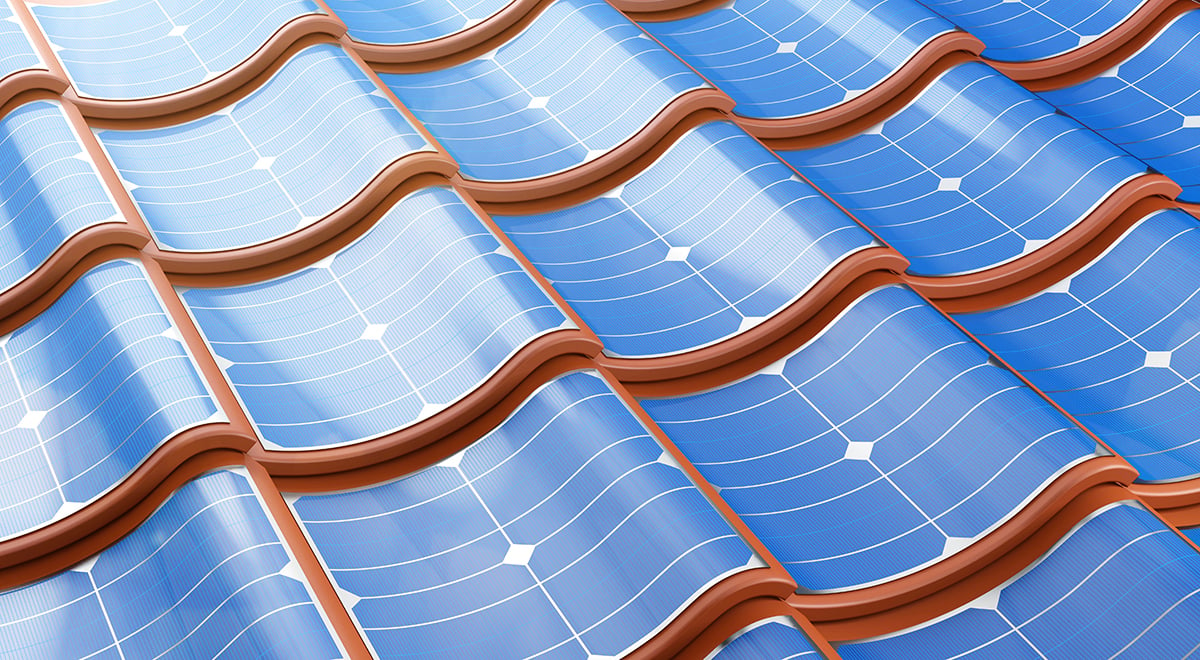The flat roofs of commercial buildings and apartment blocks have historically been notorious for water problems. No roof is ever completely flat, causing water to pond in certain areas. Eventually this water finds its way through to the building below. Concrete is actually a permeable material, so the last line of defence is the roof sheeting chosen to seal the roof. PVC was first introduced as a roofing membrane in the1960s, and has become a material of choice in the industry due to its durability and resistance to leaks.
At the same time, the drive towards more sustainable energy has fuelled the development of photovoltaic cells. The large flat roofs of commercial and residential developments have made them an ideal location for large numbers of photovoltaic (PV) cells. Recently, scientists have merged the advantages of PVC roof sheeting with sophisticated PV cell technology to produce thin-film PV cells. This exciting development provides robust roof sheeting that also generates power.
The advantages of PVC roofing membranes
PVC roofing membranes have become an industry standard over their more than 30 years of use. They are installed as a single sheet made up of two layers with reinforcing between them, providing the roof sheets with excellent breaking strength properties. Another significant advantage of PVC over other roof sheet materials is their hot air welded joints. Joints are often the weak point in a roofing membrane installation, leading to the risk of leaks. Hot air welded joints, however, are stronger than the PVC sheeting itself. PVC sheet is also formulated to be UV resistant and impermeable to water, making it an ideal material for roof membranes.
The development of thin-film PV cells
Crystalline silicon makes up more than 90% of the PV cells we use today. They come in a monocrystalline or polycrystalline form, with the mono version being more efficient as well as more expensive. Maximum efficiencies achieved with monocrystalline PV cells are quoted at over 21%. This is a massive improvement from the early days of PV cells, where 6% was the norm. However, researchers have constantly been seeking ways to bring down the cost of production while increasing efficiency. This has led to the development of new PV materials like amorphous silicon, cadmium telluride, and copper indium gallium selenide (CIGS). All of these are used to make thin-film photovoltaic cells.
Using PVC for thin-film photovoltaic cells
Thin-film PV cells are effectively an integrated solution where PV cells are printed onto the roofing membrane. This has the potential to significantly reduce the cost of production for PV cells, as they can be manufactured in rolls and installed by roofing contractors just like standard roof membranes. Electrical connections are done separately. As with most new technology, early results were not economical. Their benchmarks of efficiency did not compare favourably with crystalline silicon PV panels. Over time the performance of thin-film solar has improved dramatically. Latest generation CIGS thin-film technology delivers over 16% efficiency.
An excellent example of a project that combined a PVC-based roof membrane with flexible thin-film PV was completed in 2018 on a large sports complex called the Maaspoort in Den Bosch, the Netherlands. A power output of 125 Mwh of green energy was achieved by gluing 418 flexible solar modules to an EVALON® roof membrane. As a result of this project, Maaspoort has achieved its goal of being 100% climate neutral. Project implementers see the combination of EVALON® roof sheeting and flexible thin-film PV as an ideal solar solution. The PVC based EVALON® sheeting is a durable, long-life membrane lasting up to 40 years, while the thin-film PV modules are light-weight. They adhere easily to the roof membrane without needing penetrations through the membrane to install.
Thin-film solar has also penetrated the solar roof tile market. This innovative solar solution integrates with a standard roof installation. Each tile acts as a small solar panel, but their combined energy capacity is significant when connected together in the roof. The solar film is encapsulated in the body of the tile. Various polymers are used as layers in the tile manufacture, with connector junction boxes made from PVC.
Contact Vynova
Vynova is a leading European supplier of PVC with manufacturing sites in Germany, France and the Netherlands. We produce a wide range of PVC resins used in various applications including the production of PVC roofing membranes. Contact one of our PVC sales representatives or find out more about our PVC grade portfolio here .




